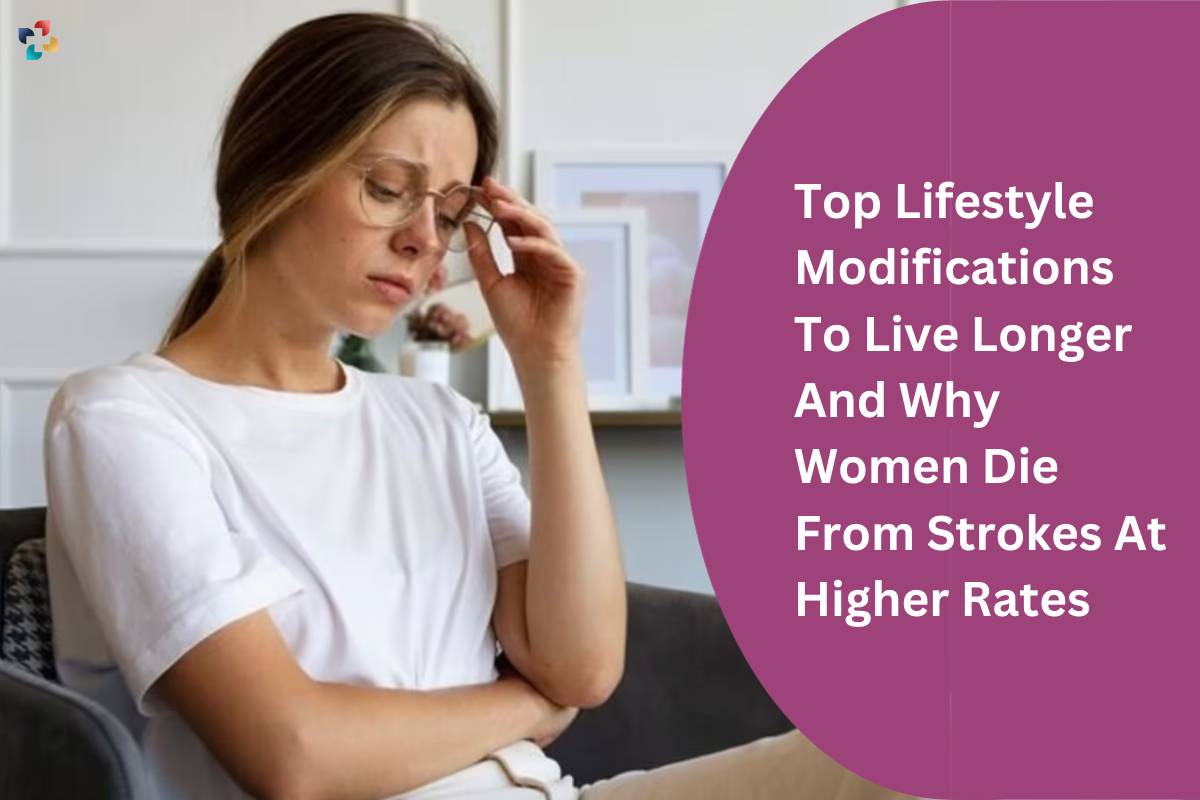Stroke affects more women than males, and this disparity can be due to a number of risk factors that change depending on the age group.
Stroke fatalities are anticipated to rise from 6.6 million in 2020 to a startling 9.7 million by 2050, with this increase expected to be most pronounced in low- and middle-income nations. According to a New York Times research, about 8 lakh individuals in the US experience a stroke each year, and among them, women are more likely to pass away than men.
Women are more susceptible to strokes than males are for a variety of reasons, including a longer life expectancy, a higher risk of having comorbid illnesses, and biochemical changes during menopause. Compared to other women who experience this significant change between the ages of 50 and 51, many women experience the menopause before the age of 40. They may have a 98% increased risk of stroke as a result of this early menopause. The NYT investigation also mentioned additional risks, such as the use of hormone tablets or risk factors both during and soon after pregnancy.
Although strokes are a dangerous medical disease that can affect anyone, research has found that women are more vulnerable to them than males.
“Over 6.6 million people worldwide pass away from strokes every year, and there is growing concern that this figure is rising, especially among young and middle-aged people and in low-to middle-income nations. According to a recent study, stroke-related deaths are expected to increase by roughly 50% by 2050, totaling 9.7 million deaths annually. When the brain’s supply of oxygen and nutrients is cut off, strokes happen.
This might be the result of frail blood vessels that burst under strain and cause a hemorrhagic stroke. An ischemic stroke, which is more common, is brought on by clots or plaque blocking blood arteries that supply the brain. Both types of stroke can result in death or lifelong damage. According to Dr. Tushar Raut, consultant in neurology at Kokilaben Dhirubhai Ambani Hospital in Mumbai, stroke survivors frequently struggle with long-term disability, increased depression risk, memory problems, and other difficulties.
Stroke affects more women than males, and this disparity can be due to a number of risk factors that change depending on the age group. Stroke risk increases in younger women owing to things like using oral contraceptives, getting pregnant, having preeclampsia, or having gestational diabetes. While using hormone therapy beyond menopause may also have an impact on older women, changes in hormone levels do have an impact on them. Because blood clotting factors alter throughout pregnancy and the postpartum period, there is an increased risk of stroke during these times.
In contrast to vascular atherosclerosis, a study indicated that cardioembolism is a primary cause of stroke in women. The higher prevalence of valvular heart disease and nonvalvular atrial fibrillation in females may be a contributing factor to this disparity. In addition, women smoke less, which reduces their risk of atherothrombotic strokes. Gender differences in categorising risks and offering women preventative care are a significant risk of higher risk. It’s also important to remember that women frequently have more severe strokes.
Strokes tend to affect women more severely than they do males. Additionally, female patients are more likely to experience greater disability and loss of independent function following a stroke, according to Dr. (Col) Joy Dev Mukherji, Vice Chairman & Head- Neurology, Max Super Speciality Hospital, Saket.
Reasons why women experience strokes more frequently
Compared to men, women are more likely to experience strokes due to a variety of biological and lifestyle variables.
“Hormonal changes brought on by menstruation, pregnancy, and menopause significantly raise women’s risk for stroke. Due to changes in blood pressure and stress on the heart, risk rises during pregnancy. Birth control pill use has been associated with an increased risk of stroke, particularly in women who smoke or have high blood pressure. The natural decrease in oestrogen levels in women’s bodies after menopause also raises the risk of stroke, according to Dr. Raut.
Women are more vulnerable to strokes for a variety of reasons, according to Dr. Nitin Rai, Consultant in Neurology at Fortis Escorts on Okhla Road, New Delhi.
Hormonal fluctuations: Women’s lifetime hormonal changes, such as pregnancy, menopause, and birth control pill use, can influence their risk of stroke.
Women often live longer than males do, which implies that the risk of stroke grows over a longer period of time for them.
Higher prevalence of hypertension: As women age, high blood pressure becomes more common. It is a major risk factor for strokes.
Women who suffer from migraines with aura are more likely to have a stroke. For prevention, it is essential to comprehend this link.
Autoimmune conditions: Women are more likely to suffer from autoimmune conditions including lupus and antiphospholipid syndrome, which can raise their risk of stroke.
Social and economic variables may have an impact on access to healthcare and lifestyle decisions, which may have an impact on stroke risk.
How women can prevent strokes; be aware of the precautions
Women are recommended to keep a healthy lifestyle to lower their risk of stroke. Regular exercise and a balanced diet full of fruits and vegetables and low in saturated fats are two examples of this.
“Other significant preventative measures to lower the risk of stroke include quitting smoking, consuming alcohol in moderation, and managing diabetes well. Blood pressure should be regularly monitored and treated. Regular physicals are necessary to track diseases like atrial fibrillation that may increase the risk of stroke. Additionally, women are encouraged to use caution while taking oral contraceptives and hormone replacement treatment, especially if they are older or have other risk factors. It is always advised to seek guidance from healthcare professionals based on one’s particular health situation, adds Dr. Raut.
Since women have historically received less aggressive cardiovascular disease (CVD) screening and treatment than males, adequate screening can identify these risks early. Women who have a history of diabetes and CVD are less likely to achieve the recommended cholesterol levels. adequate cholesterol-lowering medication and hypertension treatment to reduce stroke risk in women. Women who have diabetes are at increased risk for stroke and heart disease, which requires careful management because these patients have trouble maintaining healthy blood pressure and cholesterol levels. The two most crucial therapies are weight loss and inactivity. In older and more fragile women, the danger of falling should be weighed against the risk of stroke. A healthy lifestyle is associated with a decreased risk of a stroke.
Dr. Rai discusses the lifestyle changes that women need to make in order to lower their risk of stroke and live longer.
Control blood pressure: It’s important to regularly monitor and manage blood pressure. To keep their blood pressure levels at a healthy range, women should collaborate with their medical professionals.
Healthy eating: A diet low in saturated and trans fats and high in fruits, vegetables, whole grains, lean proteins can help reduce the risk of stroke.
Regular physical activity lowers the risk of stroke and aids in maintaining a healthy weight. Aim for 150 minutes or more per week of moderate-intensity exercise.
Stroke risk is considerably increased by smoking, therefore give it up. Non-smokers should avoid being around secondhand smoke, and women who smoke should get help quitting.
Limit alcohol consumption since it increases the risk of stroke and high blood pressure. Women should adhere to recommendations for responsible drinking.
Women and Strokes
Control your stress:
Long-term stress raises your risk of having a stroke. Techniques for relaxation, mindfulness, and stress reduction can be beneficial.
Hormone therapy:
Before deciding on hormone therapy for menopausal symptoms, examine the risks and benefits with a healthcare professional.
Checkups on a regular basis:
Women should plan routine checkups with their medical professionals to keep track of their overall health, talk about risk factors, and obtain preventative care.
Learn the signals:
For quick medical assistance, it’s critical to recognise the symptoms of a stroke (FAST: Face drooping, Arm weakness, Speech trouble, Time to contact 911).
Education and advocacy:
Women can advocate for improved access to healthcare and resources by educating themselves and their communities on stroke risk factors and prevention.
Also Read: 10 Facts About Heart Disease Every Woman Should Know







